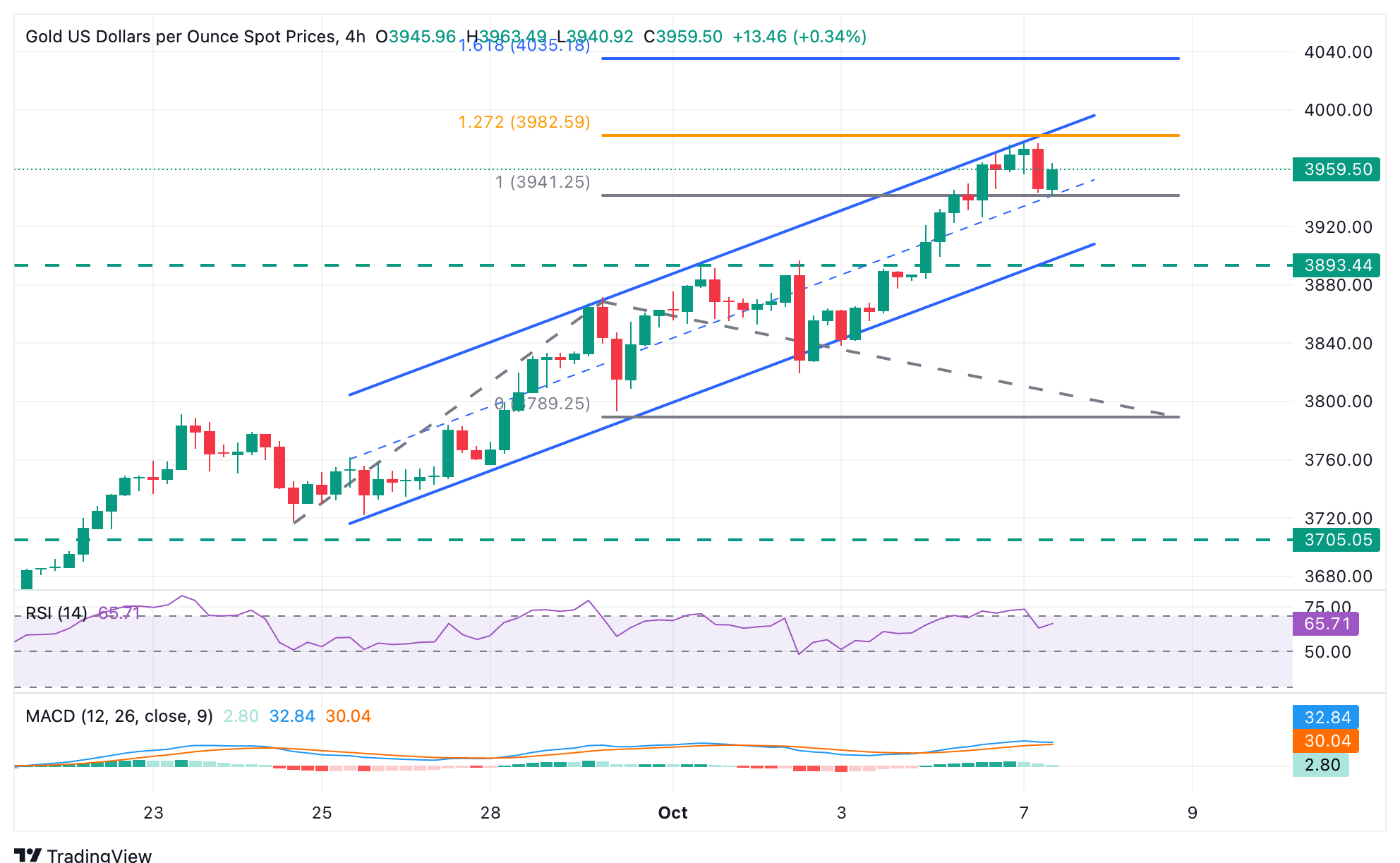Gold Price Forecast: XAU/USD holds near record highs with $3,940 holding bears
- Gold stands comfortably near all-time highs, with downside attempts contained above $3,940.
- Political and fiscal concerns in France and Japan are weighing on risk appetite this week.
- XAU/USD maintains its bullish bias intact with the $4,000 level at a short distance.
Gold remains steady right below all-time highs, at $3,973, supported by a cautious market mood on Tuesday. The precious metal is trading right below $3,960 during the European morning trading, with downside attempts held above $3,940
Growing political and fiscal concerns after Takaishis’ victory in Japan and France’s Prime Minister Lecornu’s resignation have spooked investors away from the Euro and the Yen, while Gold strengthened on the back of its safe-haven status.
Technical Analysis: Next resistances are $3,980 and $4,000

The technical picture remains positive, with price action contained within an ascending channel from late September lows at $3,720. The 4-hour RSI has pulled back from oversold levels, and the fundamental background is supportive, which suggests that there is room for further appreciation.
To the upside, immediate resistance is at $3,980, where Monday’s all-time highs meet the 127.2% Fibonacci extension of the September 24-30 rally. Further up, bulls might be attracted by the $4,000 psychological level ahead of the 161.8% extension of the mentioned cycle, at $4,035.
A bearish reaction from current levels would face support at the intraday low of $3,940. Further down, the targets are the previous resistance area around $3,790 (September 23 and 26 highs), and the September 28 low, at $3,755.
Gold FAQs
Gold has played a key role in human’s history as it has been widely used as a store of value and medium of exchange. Currently, apart from its shine and usage for jewelry, the precious metal is widely seen as a safe-haven asset, meaning that it is considered a good investment during turbulent times. Gold is also widely seen as a hedge against inflation and against depreciating currencies as it doesn’t rely on any specific issuer or government.
Central banks are the biggest Gold holders. In their aim to support their currencies in turbulent times, central banks tend to diversify their reserves and buy Gold to improve the perceived strength of the economy and the currency. High Gold reserves can be a source of trust for a country’s solvency. Central banks added 1,136 tonnes of Gold worth around $70 billion to their reserves in 2022, according to data from the World Gold Council. This is the highest yearly purchase since records began. Central banks from emerging economies such as China, India and Turkey are quickly increasing their Gold reserves.
Gold has an inverse correlation with the US Dollar and US Treasuries, which are both major reserve and safe-haven assets. When the Dollar depreciates, Gold tends to rise, enabling investors and central banks to diversify their assets in turbulent times. Gold is also inversely correlated with risk assets. A rally in the stock market tends to weaken Gold price, while sell-offs in riskier markets tend to favor the precious metal.
The price can move due to a wide range of factors. Geopolitical instability or fears of a deep recession can quickly make Gold price escalate due to its safe-haven status. As a yield-less asset, Gold tends to rise with lower interest rates, while higher cost of money usually weighs down on the yellow metal. Still, most moves depend on how the US Dollar (USD) behaves as the asset is priced in dollars (XAU/USD). A strong Dollar tends to keep the price of Gold controlled, whereas a weaker Dollar is likely to push Gold prices up.

